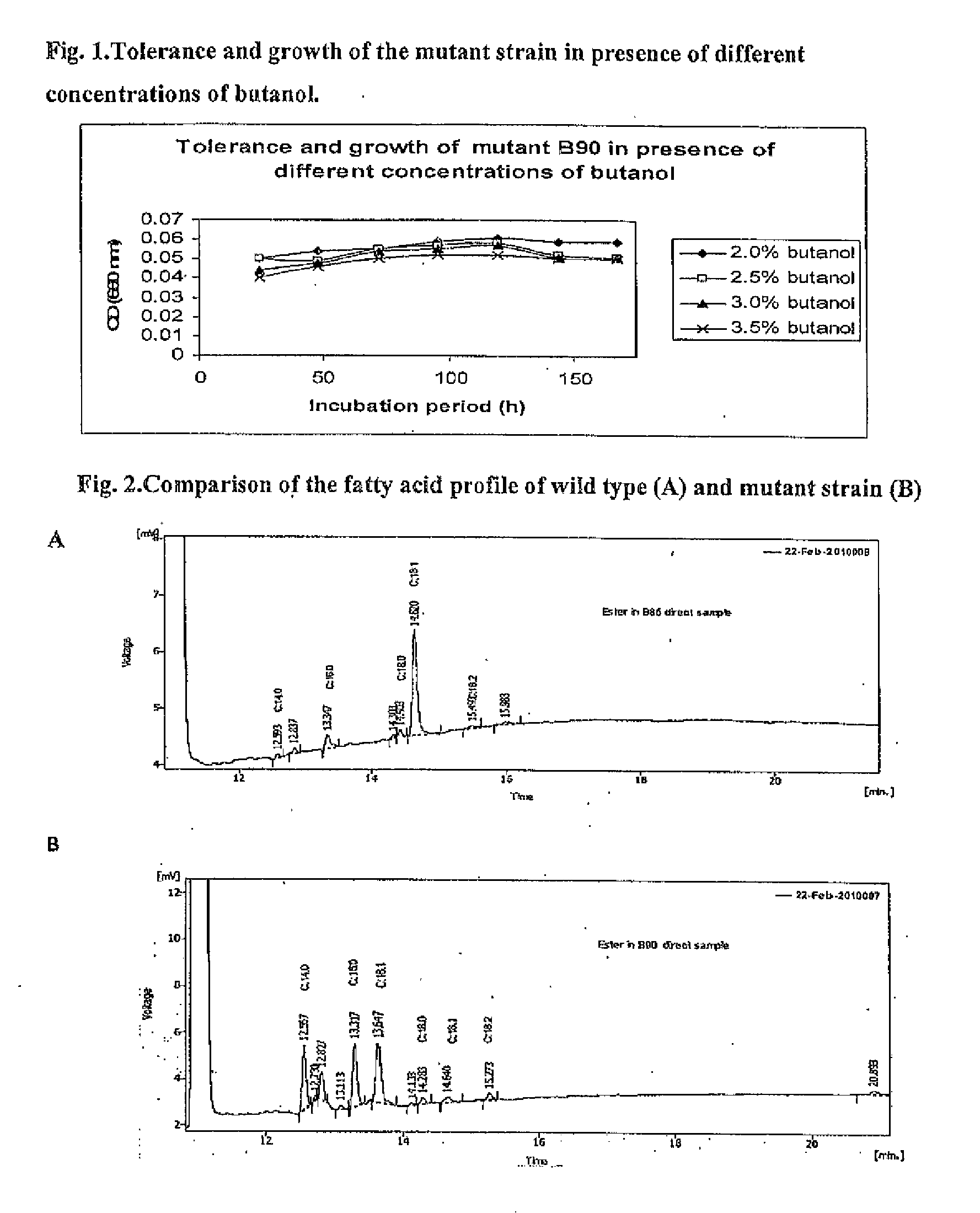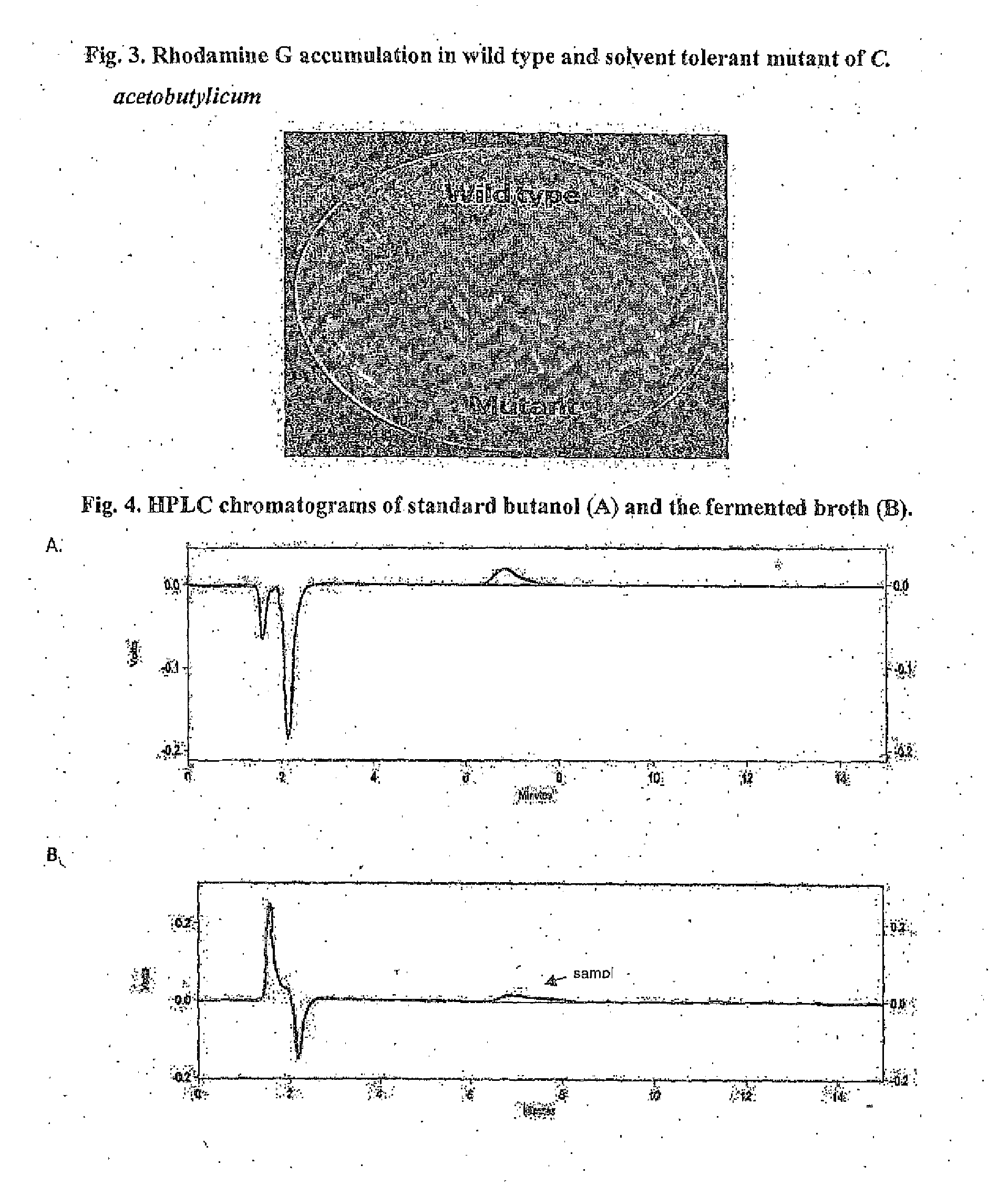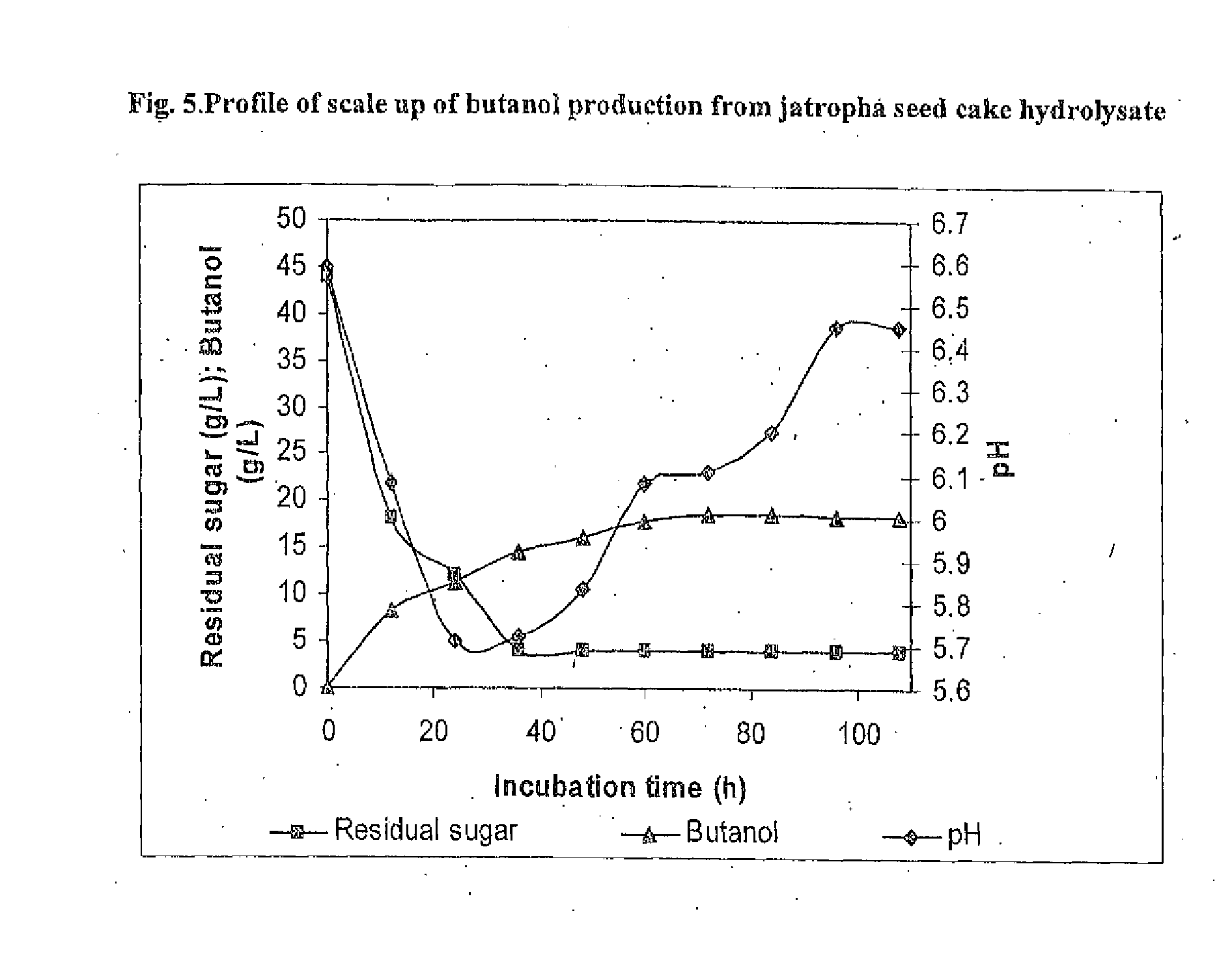Butanol fermentation using acid pretreated biomass
a technology of acid pretreatment and butanol, which is applied in the field of butanol fermentation using acid pretreatment biomass, can solve the problems of low yield, low butanol titer in the fermentation broth, and complex actual fermentation, etc., and achieve the effect of high yield
- Summary
- Abstract
- Description
- Claims
- Application Information
AI Technical Summary
Benefits of technology
Problems solved by technology
Method used
Image
Examples
example 1
Organism and Growth Conditions
[0083]Clostridium acetobutylicum ATCC 4259 was grown in 125 ml bottles containing 50 ml of the Anaerobic Sugar (AnS) medium having a composition (g / L): glucose, 20; peptone, 10; yeast extract, 5.0; K2HP04, 3.0; NaCl, 1.0; (NH4)2S04, 1.0; CaCl22H20, 0.2; MgCl2.6H20, 0.2; and Na2C03, 1.0 and pH was adjusted to 6.5.
[0084]The headspace was purged with N2, and Na2S.9H20 (0.02% (w / v)) was added to remove traces of dissolved oxygen (Samuelov et al, 1991; Lee et al, 2000). The glass bottles were sealed with butyl rubber caps and sterilized for 10 min at 121° C. The sterile medium was inoculated with 1-3% (v / v) seed culture and incubated at 37° C. for 132 h with intermittent gentle shaking.
example 2
Mutation Studies
[0085]Chemical mutagenesis was carried out using MNNG (1-methyl-3-nitro-1-nitrosoguanidine). Alternate thioglycolate (AT) media was inoculated with C. acetobutylicum ATCC 4259 from the stab culture. After 12 h growth at 37° C., the culture was harvested and centrifuged. The cell pellet was washed with 2 ml citrate buffer (pH 5.8) and 100 μl of MNNG (stock solution 100 mg / ml prepared in sterilized distilled water) was added to the cells, incubated at 30° C. for 70 min. The mutagenised cell mass was centrifuged and the supernatant discarded appropriately in biohazard containers. The cells were washed twice with AT broth and resuspended in 1 ml AT broth. The mutants were screened on AT agar plates containing 13 g / L butanol and incubated at 37° C. for 12-16 h.
example 3
Tolerance and Growth Profile of Butanol Tolerant Mutant
[0086]Mutants tolerant to 1.3% butanol were further screened for tolerance to higher concentration of butanol on AT agar medium containing (v / v) viz. 1.5%, 1.8%, 2.0%>, 2.5%) and 3.0%) butanol. One mutant growing on 3.0%> butanol containing AT agar medium plate was transferred to sealed 125 ml bottles containing 50 ml of AT medium having various amounts of butanol viz. (v / v) 2.0% o, 2.5%, 3.0% and 3.5%. The tolerance and growth profile of the mutant was monitored with respect to time.
[0087]The wild type strain C. acetobutylicum ATCC 4259 could tolerate up to 1.5% butanol in the medium beyond which there was cessation of growth. Whereas, the mutant strain C. acetobutylicum MTCC 5587 could tolerate up to 3.5% (v / v) butanol in the AT medium (FIG. 1). The growth at these levels of butanol was extremely slow and feeble due to the toxicity of the solvent. At higher concentrations i.e. 3.8% and 4%, there was no growth. The mutant has b...
PUM
| Property | Measurement | Unit |
|---|---|---|
| Temperature | aaaaa | aaaaa |
| Temperature | aaaaa | aaaaa |
| Temperature | aaaaa | aaaaa |
Abstract
Description
Claims
Application Information
 Login to View More
Login to View More - R&D
- Intellectual Property
- Life Sciences
- Materials
- Tech Scout
- Unparalleled Data Quality
- Higher Quality Content
- 60% Fewer Hallucinations
Browse by: Latest US Patents, China's latest patents, Technical Efficacy Thesaurus, Application Domain, Technology Topic, Popular Technical Reports.
© 2025 PatSnap. All rights reserved.Legal|Privacy policy|Modern Slavery Act Transparency Statement|Sitemap|About US| Contact US: help@patsnap.com



